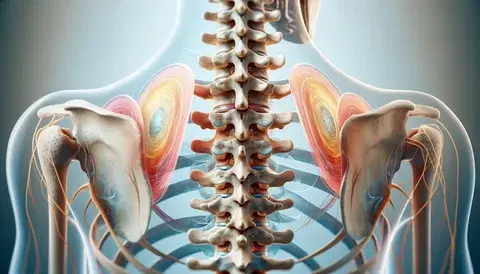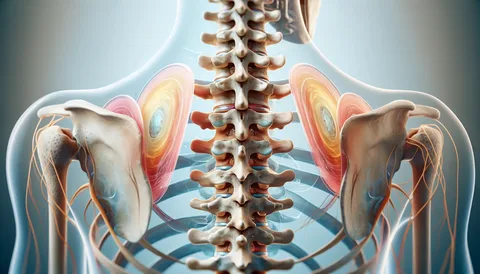We use cookies to personalise site content, social media features and to analyse our traffic. We also share information about your use of this site with our advertising and social media partners.
Posted by - DiseasesMedication -
on - Oct 2 -
Filed in - Health -
63 Views - 0 Comments - 0 Likes - 0 Reviews

ICD 10 DJD, also known as osteoarthritis, is one of the most prevalent chronic musculoskeletal disorders worldwide. It is a leading cause of pain, disability, and reduced mobility, particularly among older adults. With millions of cases diagnosed each year, accurate medical documentation and coding are crucial in ensuring proper treatment, insurance reimbursement, and research tracking. This is where the ICD-10 DJD codes play a vital role.
In this blog, we’ll explore DJD in detail, its symptoms and risk factors, the significance of ICD-10 coding, the specific ICD-10 codes used for DJD, common challenges in coding, and tips for accurate documentation.
ICD 10 DJD is a chronic condition caused by the breakdown of cartilage, the protective tissue that cushions joints. When cartilage wears away, bones rub directly against each other, causing pain, stiffness, swelling, and decreased mobility. DJD can affect any joint, but it is most common in the knees, hips, hands, and spine.
Persistent joint pain (especially during or after movement)
Morning stiffness or stiffness after inactivity
Swelling around the affected joint
Reduced flexibility and mobility
Audible grinding or clicking sounds in the joint
Development of bone spurs
Age: More common in people over 50
Genetics: Family history of arthritis
Obesity: Extra weight increases stress on joints
Previous Injury: Sports or accident-related joint trauma
Repetitive Stress: Heavy labor or repetitive activities
Because DJD is so common and costly, accurate documentation using the ICD-10 coding system is essential.
The International Classification of Diseases, 10th Revision (ICD-10) is the global standard for classifying diseases and health conditions. For DJD, ICD-10 codes are used by doctors, coders, hospitals, and insurers to:
Document Medical Conditions Accurately – Ensures clear, detailed patient records.
Process Insurance Claims – Insurers require specific codes for reimbursement.
Guide Treatment Plans – Codes identify the joint involved and type of osteoarthritis.
Enable Research and Statistics – DJD trends can be tracked for public health policies.
Reduce Claim Denials – Specific coding prevents costly billing errors.
Incorrect or incomplete coding can lead to claim rejections, treatment delays, and inaccurate medical data.
DJD is primarily categorized under M15–M19 in ICD-10. The exact code depends on whether DJD is primary or secondary, the location of the joint, and laterality (right, left, or bilateral).
Here’s a breakdown of the most important ICD-10 codes for DJD:
M15.0 – Primary generalized osteoarthritis
M15.9 – Polyosteoarthritis, unspecified
M16.0 – Bilateral primary osteoarthritis of hip
M16.1 – Unilateral primary osteoarthritis of hip
M16.9 – Osteoarthritis of hip, unspecified
M17.0 – Bilateral primary osteoarthritis of knee
M17.1 – Unilateral primary osteoarthritis of knee
M17.9 – Osteoarthritis of knee, unspecified
M18.0 – Primary osteoarthritis of first carpometacarpal joints, bilateral
M18.9 – Osteoarthritis of first carpometacarpal joint, unspecified
M19.0 – Primary osteoarthritis of other joints
M19.9 – Osteoarthritis, unspecified site
These codes allow providers to specify exactly where and how DJD affects a patient, ensuring precise clinical communication and insurance processing.
Let’s look at some real-world coding applications:
Case 1: A patient diagnosed with bilateral knee DJD.
Correct Code: M17.0 (Bilateral primary osteoarthritis of knee).
Case 2: A patient with unilateral hip osteoarthritis on the left side.
Correct Code: M16.1 (Unilateral primary osteoarthritis of hip).
Case 3: A patient has DJD affecting multiple joints, including knees and hips.
Correct Code: M15.0 (Primary generalized osteoarthritis).
Case 4: A provider only documents “osteoarthritis” without site or laterality.
Correct Code: M19.9 (Osteoarthritis, unspecified site).
Tip: Avoid unspecified codes whenever possible, as they provide less clinical value and may delay insurance approval.
While ICD-10 provides detailed classification, accurate coding can still be challenging due to incomplete documentation or coding errors. Common issues include:
Laterality Not Documented – Whether the joint is on the right, left, or both must be clear.
Unspecified Location – General terms like “arthritis” lead to unspecified codes.
Primary vs. Secondary DJD Confusion – Coders must know whether DJD is age-related or secondary to trauma or another condition.
Multiple Joint Involvement – It can be difficult to decide between polyosteoarthritis codes and multiple site-specific codes.
Accurate coding has several key benefits:
For Patients: Ensures they receive correct treatment and insurance coverage.
For Providers: Reduces claim denials and improves reimbursement.
For Researchers: Provides accurate data for studying DJD trends.
For Healthcare Systems: Helps track prevalence and plan resources.
Without proper ICD-10 coding, patients may face delays in care, and providers may encounter financial and administrative issues.
In the old ICD-9 system, DJD was broadly coded under 715.x without much specificity. ICD-10 significantly improved coding by:
Allowing joint-specific classification (hip, knee, hand, spine, etc.)
Identifying laterality (right, left, bilateral)
Differentiating between primary and secondary osteoarthritis
Providing greater precision for research and reimbursement
This transition has been vital in improving clinical documentation and patient care.
Always document laterality (right, left, or bilateral).
Clarify whether DJD is primary or secondary.
Use polyosteoarthritis codes when multiple joints are affected.
Avoid unspecified codes unless absolutely necessary.
Keep up-to-date with coding guidelines to prevent errors.
Looking ahead, ICD-11 is expected to provide even more detailed codes for musculoskeletal conditions like DJD. Future codes may incorporate severity levels, imaging results, and functional limitations. For now, mastering ICD-10 coding ensures accuracy in today’s healthcare environment.
ICD 10 DJD is a widespread condition that significantly impacts patient quality of life. Correctly applying the ICD-10 DJD codes (M15–M19) ensures accurate diagnosis, treatment planning, insurance reimbursement, and research data collection.
Healthcare providers and coders must document site, laterality, and type of DJD to ensure proper classification. By avoiding unspecified codes and following best practices, providers can improve patient outcomes while reducing administrative challenges.
Accurate DJD coding is more than a billing requirement—it is a cornerstone of quality healthcare delivery.

“To assist disaster survivors by providing a source for them to come together in time of need, to aid in the listing of events, information and other forms of assistance, and continuing support through the recovery process.”
Share this page with your family and friends.